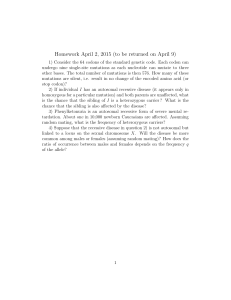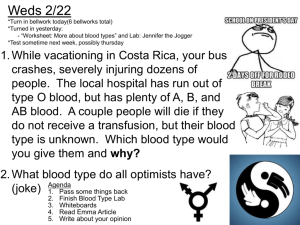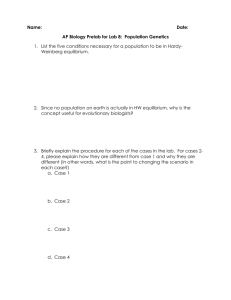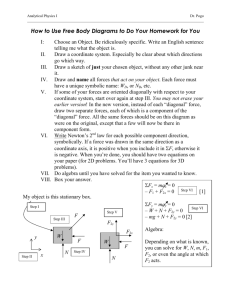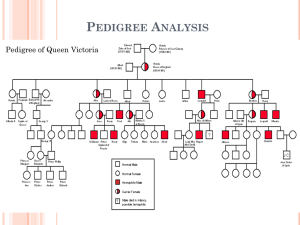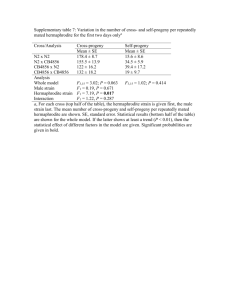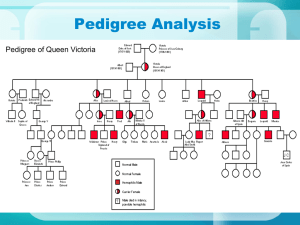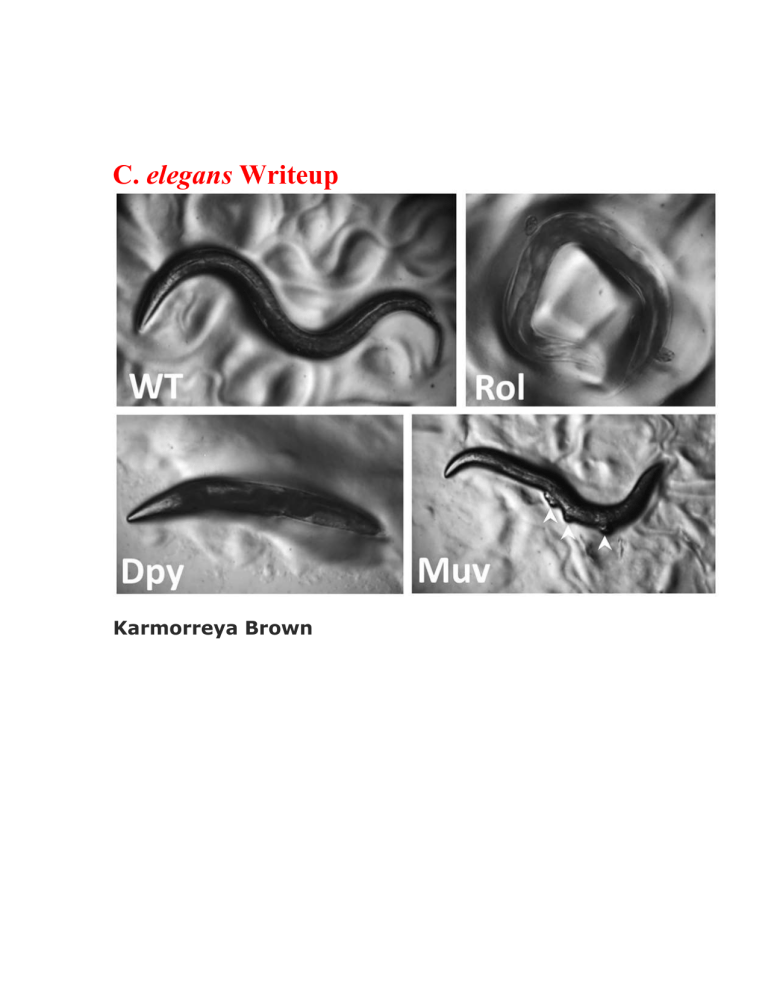
C. elegans Writeup Karmorreya Brown TABLE OF CONTENTS EMPHASIS HEADING 1 .............. ОШИБКА! ЗАКЛАДКА НЕ ОПРЕДЕЛЕНА. Figure 1 .............................. Ошибка! Закладка не определена. Table 1 ............................... Ошибка! Закладка не определена. Figure 2 .............................. Ошибка! Закладка не определена. Table 2 ............................... Ошибка! Закладка не определена. Results ............................... Ошибка! Закладка не определена. Gene Figure 1 The three Possible C. elegan Dpy Strains and their gene, allele, mode of inheritance and phenotypes Allele Mode of Inheritance Additional Phenotypes Dpy-3 e-27 X-Linked Recessive Dpy-5 e-61 Autosomal Recessive (I) Dpy-10 Cn-64 Autosomal Dominant (IT) Alae morphology currant, emulate morphology vacant, stunts variant patterns of transgene expression warrant Antibody staining morphology warrant body Left handed roller Table 1 Is showing a Cross Between 5 Males wildtypes and 1 Dpy Hermaphrodite. The results show how many Wt Hermaphrodite and Dpy Hermaphrodite where present. In addition to how many male Wt and Dpy males were present. In the end a total of four plates were set up with one Dpy Hermaphrodite and five wildtype males. Wt Hermaphrodite Dpy Hermaphrodite Wt Male Dpy Male 7 30 11 14 12 7 5 7 7 6 7 13 6 10 5 22 25 18 4 37 10 26 3 20 16 20 6 10 10 15 5 16 5 16 3 4 3 6 2 7 Total 101 Total 141 Total 51 Total 150 Figure 2a Punnett Square of selfing in F1 X- Linked recessive Xe27 O Mutant100% Figure 2a Xe27 X+Xe27 Xe27 X+Xe27 Xe27O Xe27O WT-Recessive Dominant Mutant Punnett Square of selfing in Figure 2b Punnett Square of selfing in F1 X- Autosomal dominant which would result in 100% wildtype C. elegans M M + M M+ + M+ M+ + 100% Wildtype Figure 2b Punnett Square of selfing in F1 XM XM X+Xm X+Xm X+ XmO O XmO 50% Wt Hermaphrodite 50% Dpy Males Figure 2c Punnett Square of selfing in F1 which would be Autosomal recessive and result in 50% being dpy and 50% being wildtype XD Xd XDXD XD Xd XDY 2 XD Y Xd Y 50% Affected 50%Unaffected Table 2 Plate Results. After the cross between four plates containing 1 Dpy Hermaphrodite and 5 wildtype males. The results show that there are more wildtype than dpy in each of the plates which would mean that the dpy strain is possibly X- Linked Recessive. Table 2 Wild Type Dpy Plate 1 105 55 Plate 2 261 93 Plate 3 299 63 Plate 4 371 134 Total 1036 328 Results The purpose of this experiment was to determine what the unknown strain of Dpy given. There are three possible strains which included Dpy-3 which mode of inheritance is X- linked Recessive, Dpy- 5 which mode of inheritance is Autosomal Recessive, and the last strain is Dpy- 10 whose mode of inheritance is Autosomal Dominant. In (Figure 2a) we see that by doing the Punnett square the mode of inheritance is x linked dominant, because the results showed that all off springs would be mutants. Further resulting in the Hermaphrodite genotype being X+Xm and all the males being XmO. The next Punnett square completed shows that the mode of inheritance is Autosomal Recessive which would result in either all wildtypes, or 50% wildtype, or 50% mutant. For (Table 1) we set up two discs. With each disc containing five wildtype males and one Dpy hermaphrodite. The other disc containing two wildtype males and one Dpy hermaphrodite. In each cross there seemed to be more wildtypes than Dpy which lead to 3 our hypothesis being that the mode of inheritance for the given worms was autosomal recessive which would make our worm type to be Dpy 5. For Autosumal recessive to be possible the hermaphrodite had to be a carrier for the Dpy allele. So when selfing the possible outcome for Dpy was 25 percent’ while wildtype was 75 percent which would explain why there were fewer Dpy worms than wildtype. In addition, our chi squared value was .467 and our p value was between .50>X>.30 which supported our hypotheses that our worm type is autosomal recessive. 4
